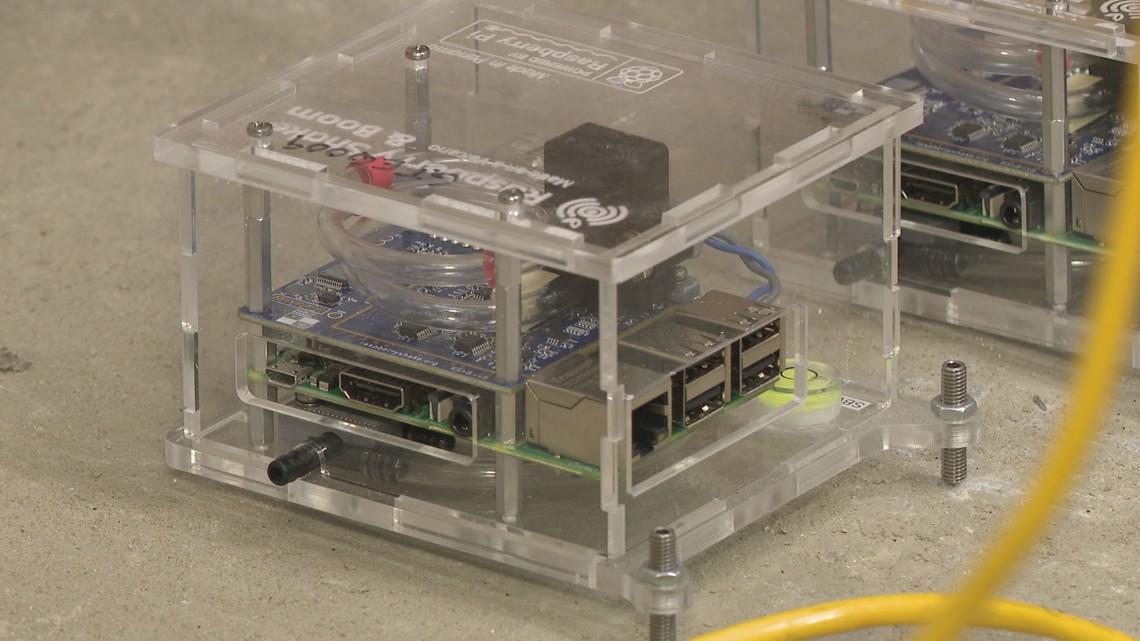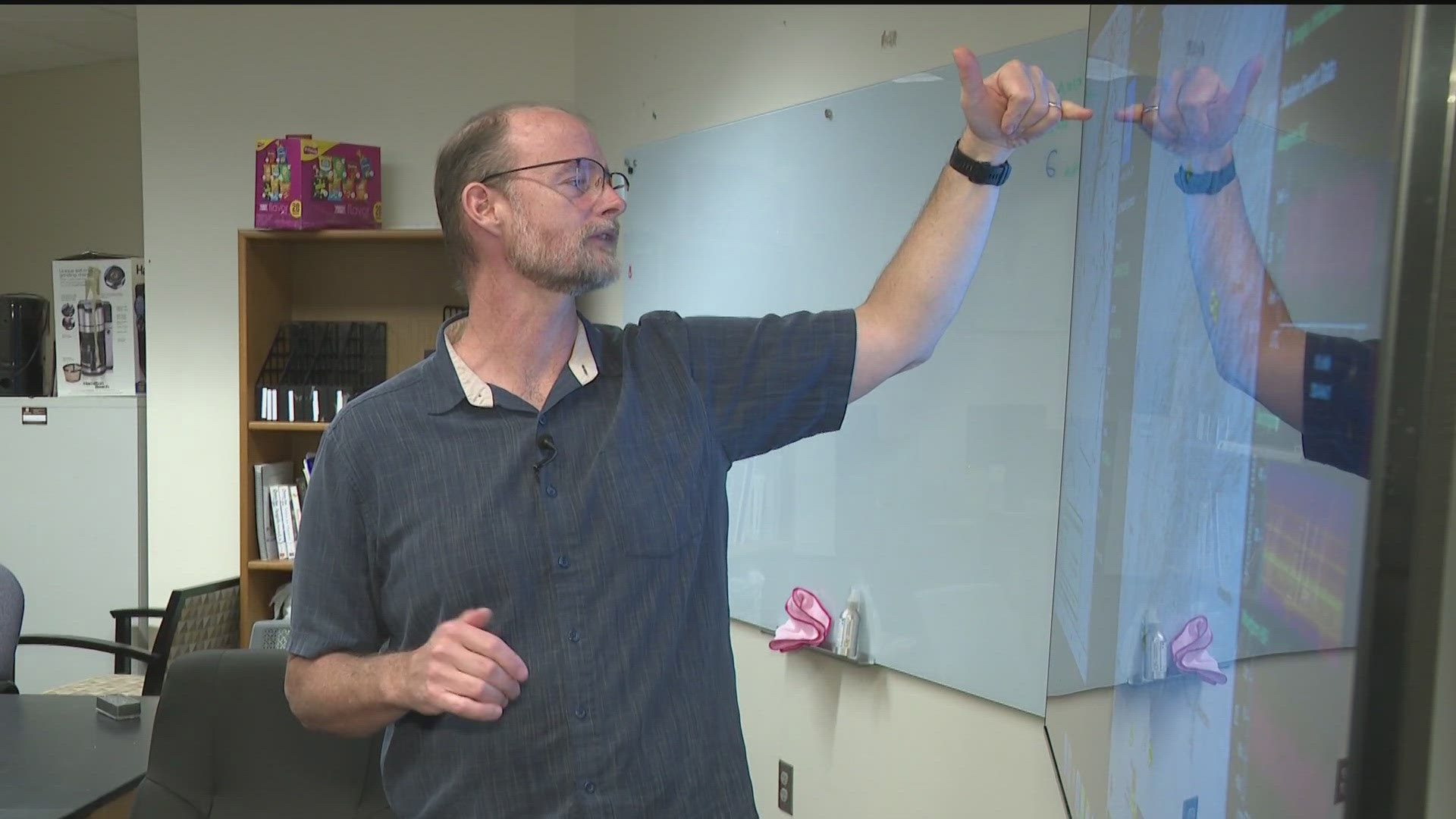BUFORD, Ga. —
Thursday 6/13 Update: A fourth earthquake has now occurred near Lake Lanier, in what researchers are now calling an 'earthquake swarm'.
11 Alive spoke to one of the research scientists this morning. You can hear read more of our conversation at the link below.
RELATED: Fourth earthquake shakes area near Lake Lanier in what scientists are calling 'earthquake swarm'
-------------------------
What's usually a quiet and peaceful place on an early summer night shook with tremors from the ground. A series of three earthquakes have occurred within the last week near Lake Lanier -- with many residents feeling the tremors.
The first earthquake was last Thursday around 11:15 p.m. It was a magnitude 2.5 at a depth of just 2.5 miles below the surface of the earth.
A little over two hours later -- the first aftershock. A magnitude 2.1 at a 5-mile depth at 1:30 a.m. last Friday.
Then, at the finish of the weekend -- another aftershock. A magnitude 2.3 earthquake at a very shallow 1.4 miles below the surface around 8:37 p.m. Sunday evening.
Dr. Andrew Newman is a Geophysicist and Professor at Georgia Tech. He said they picked up the earthquakes on seismograph instruments here in Atlanta -- and several hundred miles north in the Appalachian Mountains.
While showing us the broad range of seismometer graphs, which show the series of primary and secondary waves the earthquakes sent through the earth's crust, he explained there are four main factors that likely contributed to why so many felt these earthquakes.
Four main factors
Newman said proximity and depth are key contributors to why many people may have felt the earthquakes.
"The first thing is proximity. If you're close to it, you're going to feel it. Another thing is the depth. These were all very shallow," he said.
Most earthquakes that occur happen more than 10 kilometers under the ground. The seismic waves gradually weaken as they go through the earth's outer layer. But when you have a very shallow earthquake, the seismic waves reach the surface faster and with more energy.
The third factor has to do with our rocks on the East Coast. We feel earthquakes differently here than on the West Coast. Out West, earthquakes are more common.
"On the West Coast, we have a lot more earthquakes. And so when we have a lot more earthquakes, we have a lot more broken up Earth. And wherever the earth is more broken up, the inside part of the Earth is the seismic wave passes through... Some of that energy is lost to basically the rock sliding past itself," Newman stated. "And so that causes a little bit of heat energy that is inside the Earth. But the seismic signal itself gets smaller and smaller much more quickly as you go away. Where in the eastern United States it's much stronger rock, much more crystalline, not as many observable or weak faults. And so those signal signals will travel very freely."
To put it plainly:
"Here in the east, seismic waves travel more efficiently. They go further, and they're larger. So you have a larger area where you could potentially shake and feel it."
And the fourth factor: the time of day.
"These happened in the evening and overnight. Most people are not out, in their cars, busy. They are still and at home. So they're more inclined to notice a difference when the earthquakes hit than during the day"
What's next?
Dr. Newman said that last Thursday evening's shake was likely the main shock, and the two after were likely aftershocks. A larger earthquake is very unlikely, although also not impossible.
What is causing the earthquakes?
Scientists aren't quite sure what's causing the earthquakes. They have hypotheses or educated guesses, but they really need more data to draw some conclusions.
These earthquakes are located near, but not on, the Brevard Fault line, which runs all the way up to Virginia. But that fault is not active, nor has it been for more than 100 million years. So Newman doesn't believe it's associated with that.
Sometimes, changes in water levels of reservoirs can build up tension and stress until the right moment.
"It's possible something recent could have been the straw that broke the camel's back"
Water Levels at Lake Lanier and near the Buford Dam haven't seen any significant change in the recent weeks or months.
Dr. Newman also remarked that sometimes, the heating of the earth can also cause more stress and tension to build.
In general, earthquakes are just sudden releases of energy after tension builds up in the earth's crust.
A multi-university research venture
Scientists from Georgia State University, Georgia Tech and the University of Georgia will be collaborating to uncover more information about the earthquake series. They'll be installing a handful of seismic nodes that will be buried in the ground, and several surface seismographs. These will be located very close to the epicenters from the previous 3 earthquakes.


There's no guarantee any additional aftershocks will happen, but if they do, they'll be able to gather data.
"Then they can start actually mapping out individual faults in which these earthquakes occur on," Newman explained.

